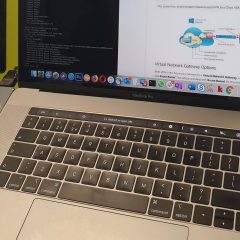vSphere Adding iSCSI Storage
vSphere Adding iSCSI KB ID 0001378 Problem iSCSI storage is nice and cheap, so adding iSCSI 10/1Gbps storage to your virtual infrastructure is a common occurrence. vSphere Adding iSCSI Solution (vSphere 7/8) Add a Software iSCSI Adaptor: Select the host > Configure > Storage Adapters > Add > Software iSCSI adaptor > OK. After a few seconds you should see it appear at the bottom of the list. Create a vSwitch and...
Recovering Windows Activation Keys
KB ID 0001115 “Have you got one of those programs that gets the Windows key?”, My colleague asked me the other week. I said “Just download a key finder application?”, “Yeah I’ve tried that and is showing the code as all B’s”. You may also just see ‘Product key was not found’ on some software. I sent him some more links and got back to what I was doing. He was having no joy...
OSX: Backup ‘Sparsebundle’ is Already In Use
KB ID 0001486 Problem Thankfully I’ve never had to rely on my Mac backup, but it runs to an EMC Iomega NAS drive that I have in my house, (which also has all my media on it). Backup Failed The backup on “target-name” is already in use. If I expand ‘details’; Time Machine couldn’t complete the backup to “target-name”. The backup disk image...
Veeam Repository: ReFS with 64 KB Block Popup
KB ID 0001452 Problem When adding a ‘Backup Repository’ to Veeam you may see one of the following; The file system on the specified volume does not support fast cloning. We recommend using ReFS volume formatted with 64 KB cluster size. Proceed anyway? The specified ReFS volume is formatted with 4 KB cluster size. We recommend formatting the volume with 64 KB cluster size. Proceed anyway? Solution Without going into what...
Windows: Enable ‘Previous Versions’
KB ID 0001393 Problem Anyone who’s ever trashed a spreadsheet, or saved a file over the top of one that they shouldn’t, will appreciate previous versions. It’s done by a technology we have had since Windows XP (and Server 2003) called ‘shadow copy’. If you are familiar with virtualisation it’s a bit like taking ‘snapshots’ of files. It’s also great for sysadmins, as users can...





